If you're looking for a dish that combines bold flavors with a hint of spice, then this kimchi noodles recipe is exactly what you need! The dish perfectly blends the tanginess of fermented kimchi with the savory goodness of noodles, creating a flavor explosion in every bite. Not only are they delicious, but they're also quick and easy to prepare, making them great for a weeknight dinner or a quick lunch.
If you love this spicy, flavorful recipes, check out my creamy gochuajang pasta and kimchi tuna fried rice.
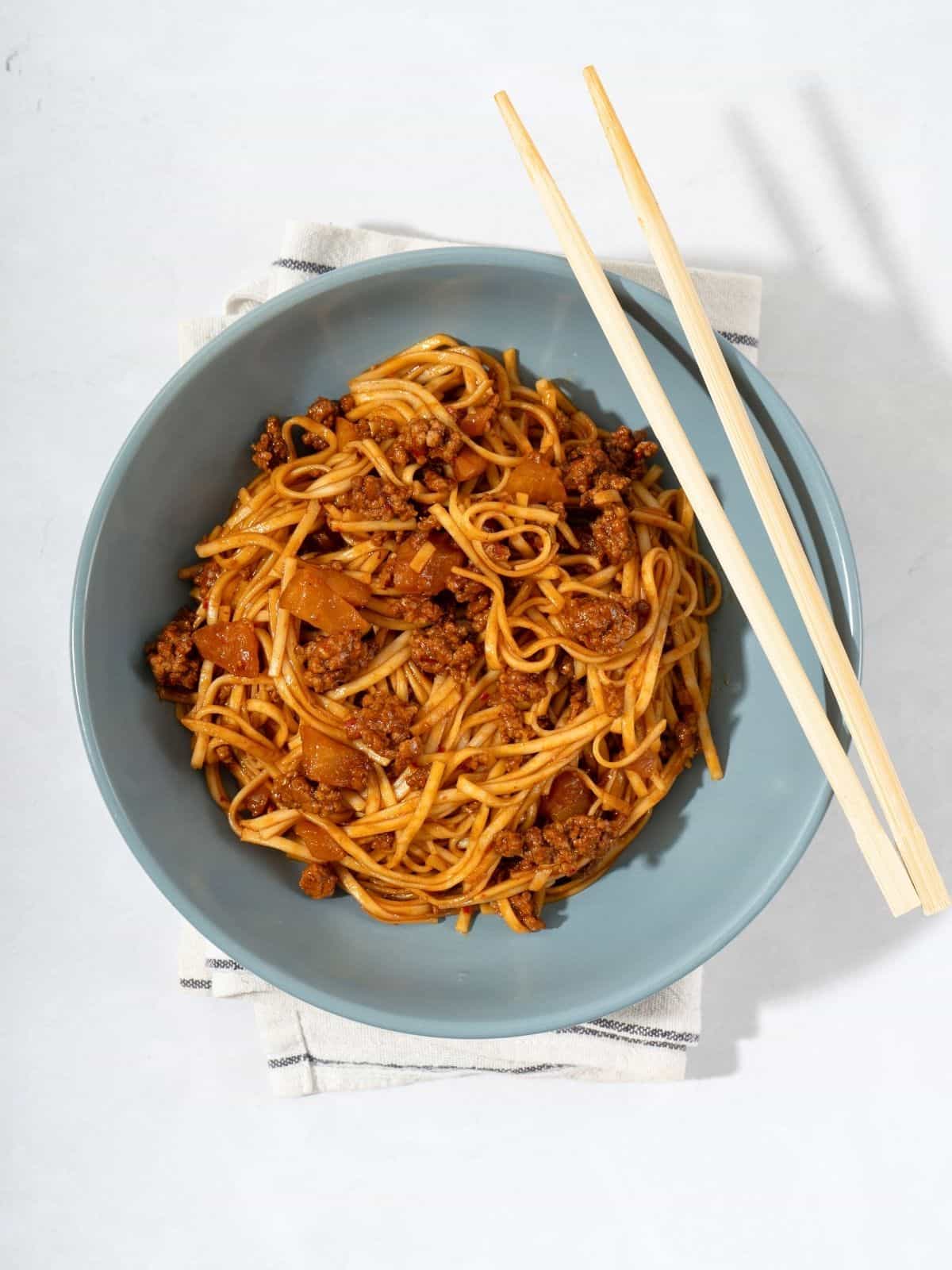
Jump to:
✔️ Why This Recipe is Great
Quick and Easy: this dish can be ready in under 30 minutes, making it perfect for busy days when you still want a flavorful, easy dish.
Bursting with Flavor: the combination of kimchi and noodles creates a unique and delicious flavor that will leave you craving more - it'll have you consider making a large batch next time!
Versatile: You can make this dish vegetarian by omitting the meat or adding tofu instead. It's also customizable to your preferred level of spiciness, depending on the level of gochujang you use.
🧈 Ingredients
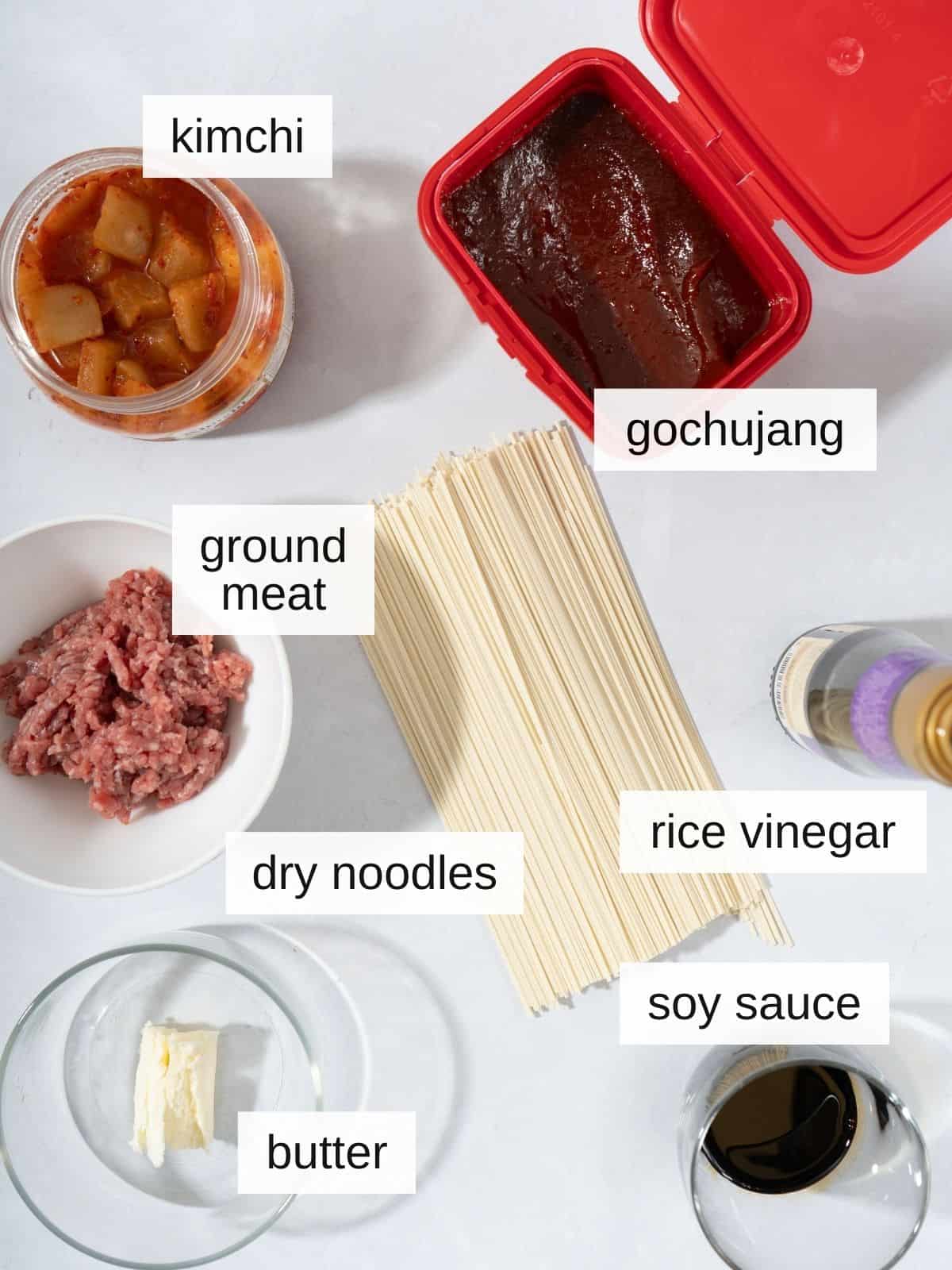
Dry Noodles: dry noodles are the base of this dish and provide a savory flavor and chewy texture to the overall dish. You can choose your favorite types of noodles, such as ramen or udon; I also like vermicceli for a gluten-free option.
Butter: butter adds a rich and creamy flavor to the dish, balancing out the spiciness of the sauce; I hoghly recommend keeping it in.
Ground Meat (Pork, Beef, or Chicken): the addition of ground meat adds protein to the dish and complements the savory flavors of the sauce; I personally prefer beef.
Kimchi: kimchi is a staple in Korean cuisine and adds a tangy, spicy, and slightly sour flavor to the dish. It also provides beneficial probiotics, though a lot of that is cooked out on the stovetop.
Kimchi Juice: don't discard the juice from your kimchi, as it contains a lot of flavor and adding it back in helps to enhance the overall taste of the dish.
Gochujang (Korean Chili Paste): this spicy and sweet chili paste is a key ingredient in Korean dishes, providing a unique flavor that elevates the dish.
Soy Sauce: soy sauce adds a salty and savory flavor to the dish, rounding out the taste of the sauce; try tamari or coconut aminos for gluten-free kimchi noodles.
Rice Vinegar or Apple Cider Vinegar: for a tangy and slightly sweet flavor, add rice vinegar or apple cider vinegar to the dish.
Oil: use any type of oil for cooking, such as vegetable or canola oil, though I generally go for avocado oil.
Brown Sugar: to balance out the spiciness of the sauce, a touch of brown sugar adds a hint of sweetness.
See recipe card for exact ingredients and quantities.
📝 Substitutions
- Noodle Type - feel free to play around with the type of noodles you use. Whether it's spaghetti for a fusion twist or traditional udon, the sauce will cling to them all deliciously. My husband prefers fetuccine!
- Chili Flakes - The gochujang adds a unique depth and heat to the dish, but if you don't have it on hand, a bit of chili flakes or gochugaru can work in a pinch.
- Vegetarian Version - for a vegetarian version, use vegan kimchi, skip the ground meat (or swap it for ground tofu), and use a bit more butter or oil for sautéing the kimchi.
🍲 How to Make Kimchi Noodles (Step-by-Step)
Step 1) Cook the noodles according to the package instructions until they're just al dente. You'll want them to have a bit of bite because they'll continue cooking when we stir-fry them. Once cooked, drain and set aside (image 1).
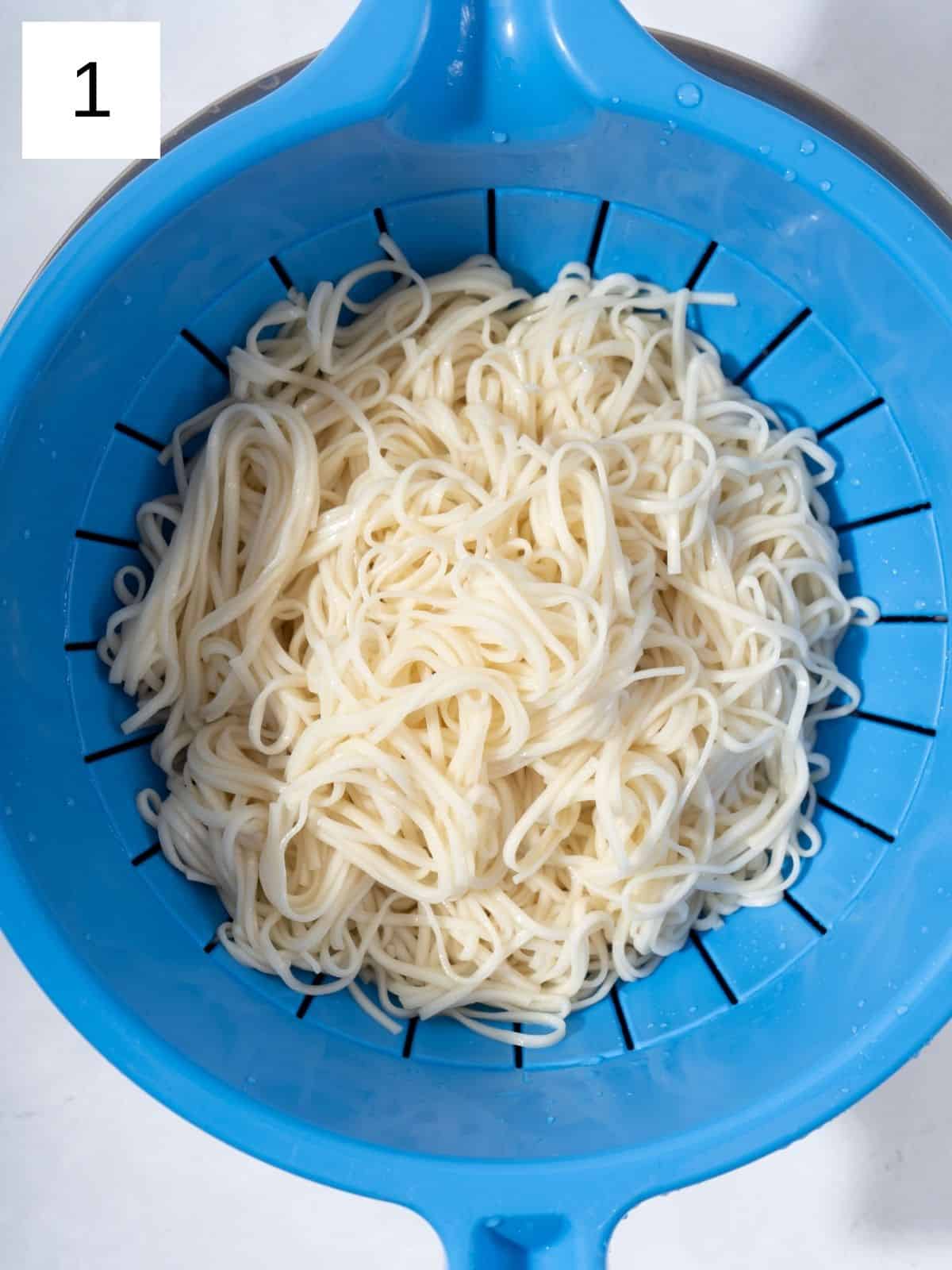
Step 2) Heat up the 2 tablespoons of oil (or butter) in a large pan or wok over medium heat. Toss in the ground meat and cook it until it's just browned but not fully cooked, about 5 minutes (image 2).
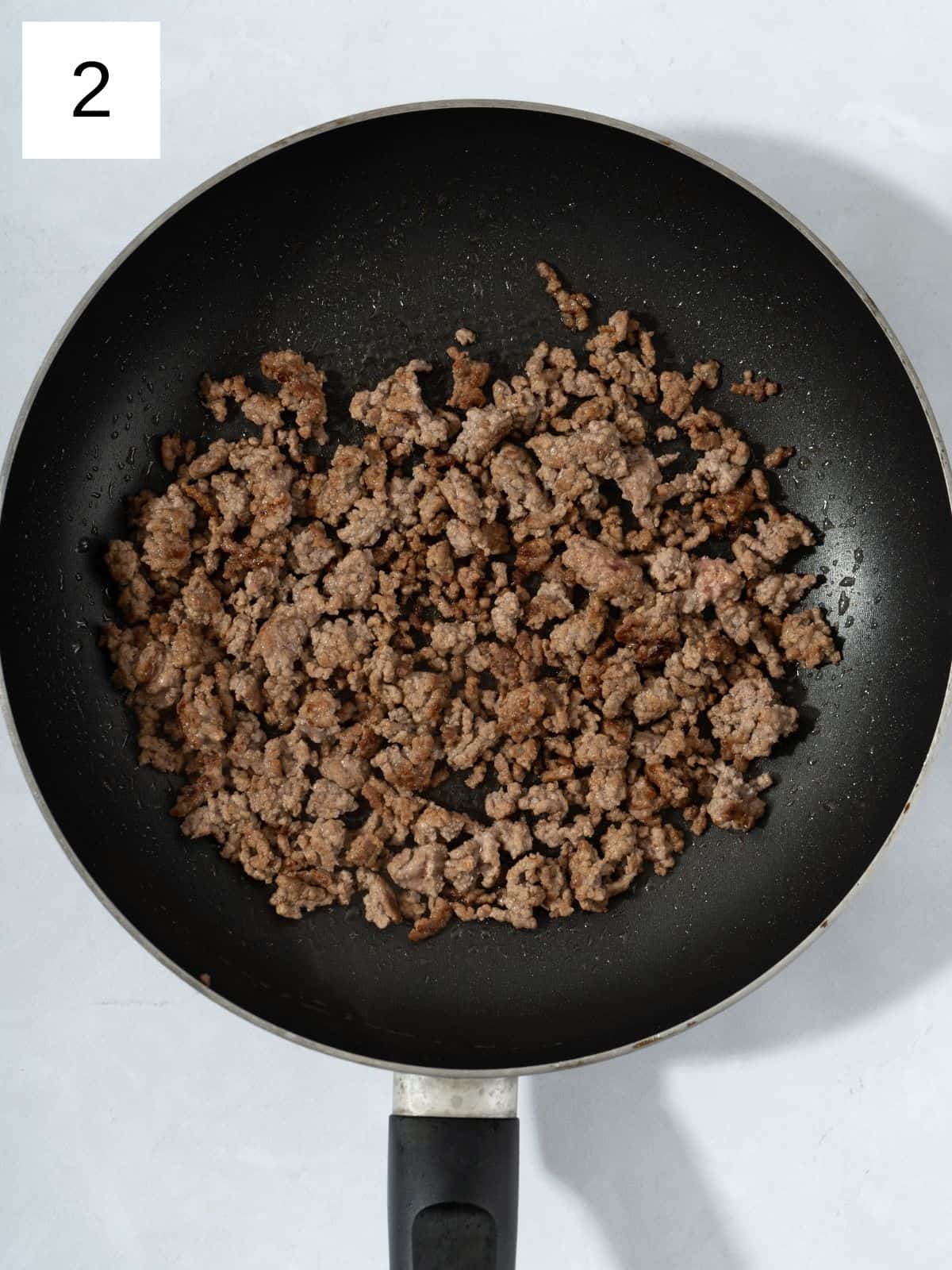
Step 3) Next add the butter to the pan; once melted and frothy, stir in the chopped kimchi and let it cook for a couple of minutes until it's fragrant (image 3); the meat should be fully cooked by now.
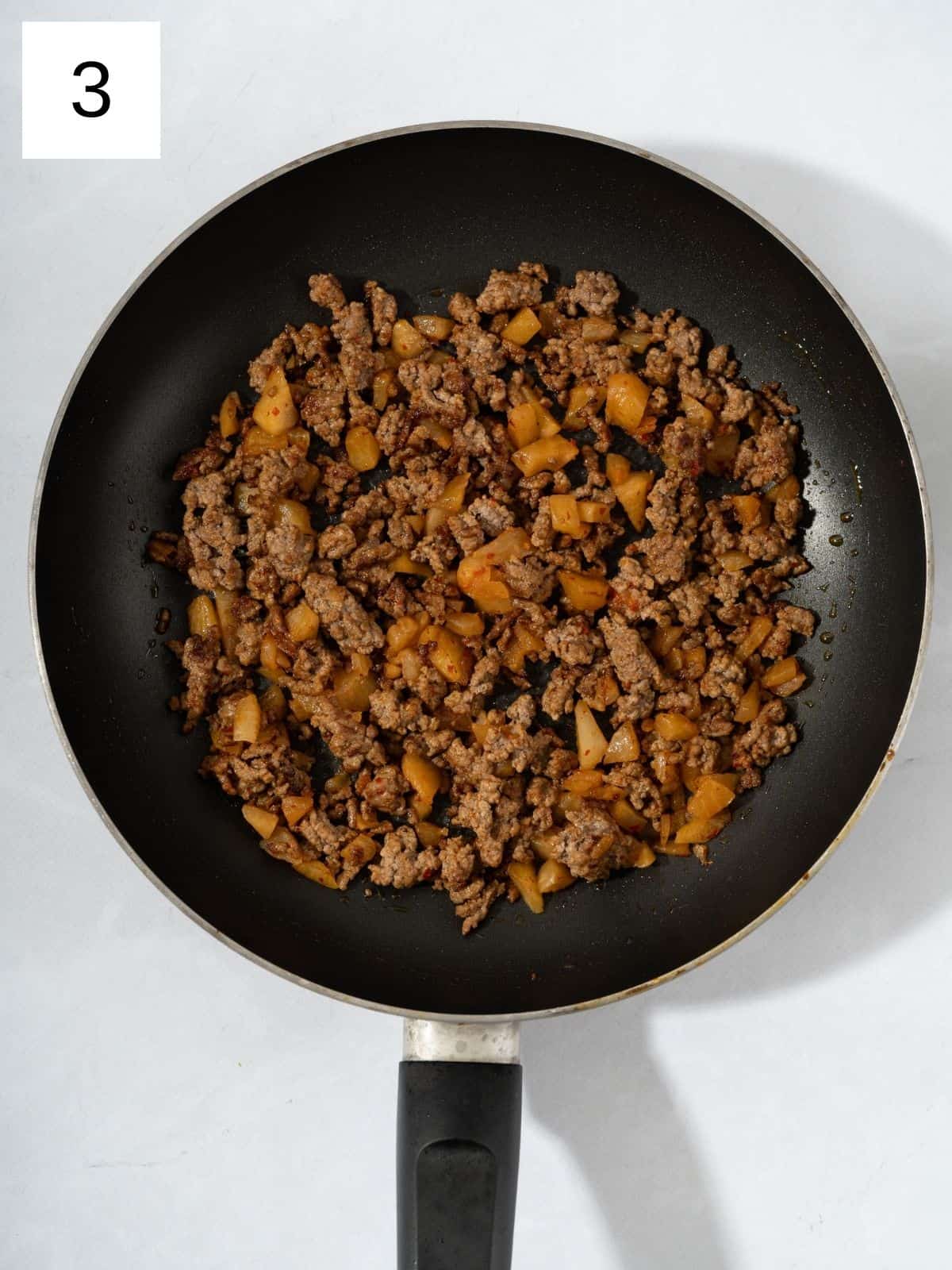
Step 4) Pour in the kimchi juice, gochujang, soy sauce, salt, sugar, vinegar and two tablespoon of water. Stir everything together and let it simmer for a minute to meld the flavors (image 4).
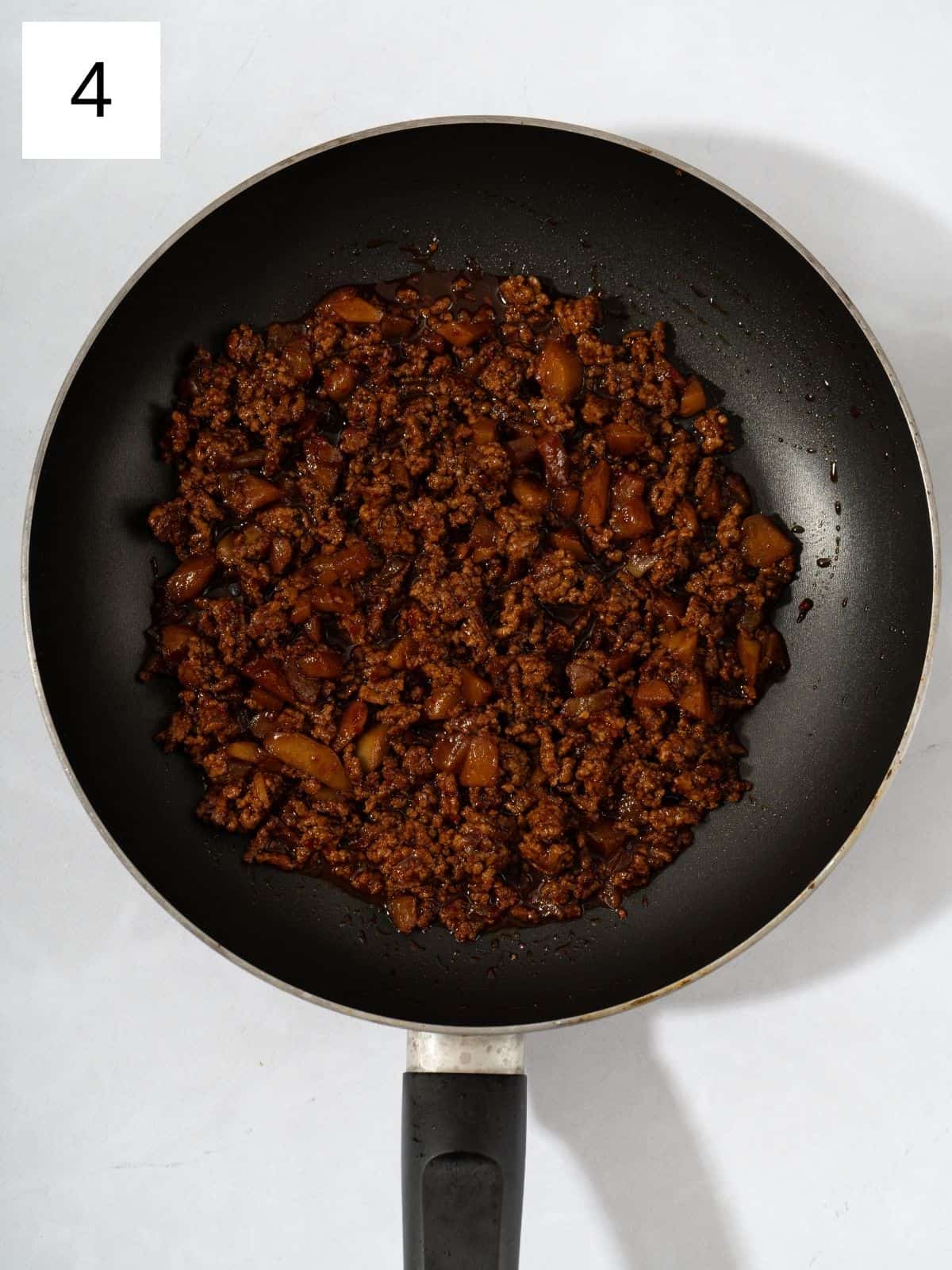
Step 5) Turn off the heat, but keep the pan over the still-hot burner. Add the cooked noodles to the pan and toss them with the sauce and kimchi mixture, stirring until the noodles are well coated and heated through (image 5).
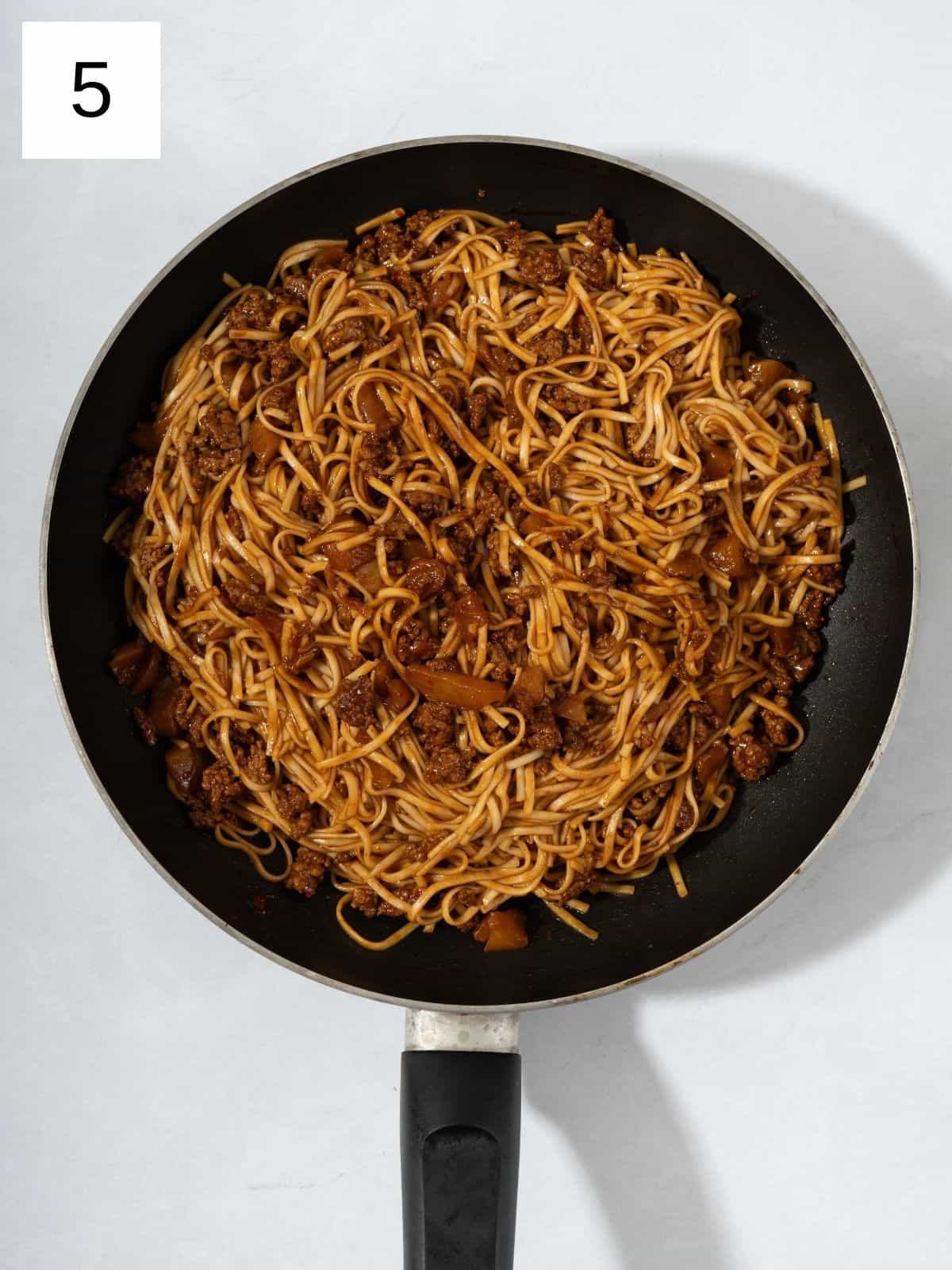
Step 6) Give it a taste and adjust the seasoning with a bit more salt if needed, then serve the kimchi noodles hot, with extra kimchi on top if you like it extra spicy (image 7).
Pro Tip: the quality of your kimchi can make a big difference, so use one that you love the taste of on its own.
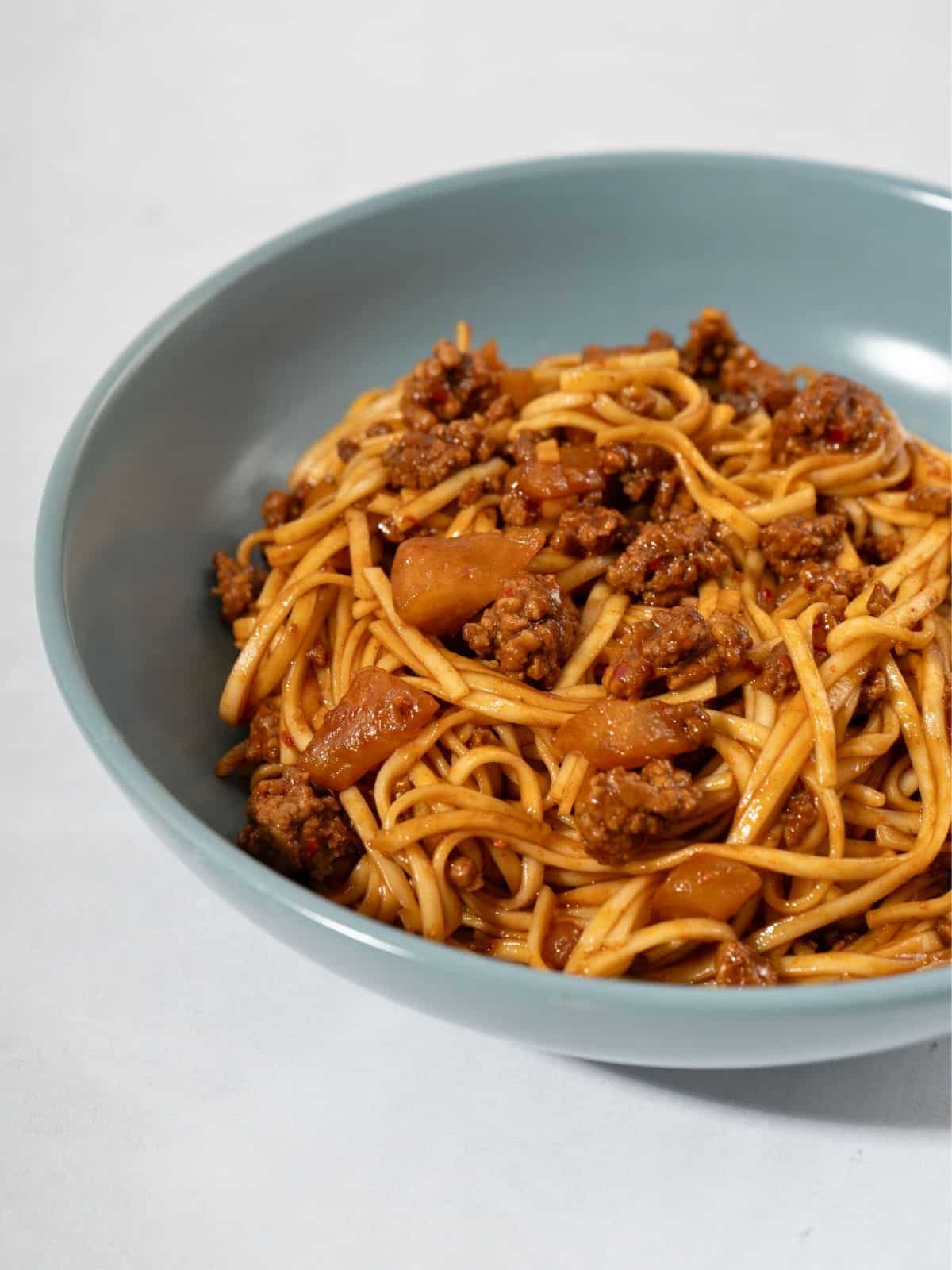
🌟 Variations
- No Vinegar - If you're not a fan of vinegar, you can omit it, but it adds a nice tang that balances the richness of the butter and meat.
- Deluxe - to make this dish even more indulgent, add some diced vegetables such as bell peppers or mushrooms to the meat mixture, then top with chopped green onions.
- Kid Friendly - To make this dish more kid-friendly, you can omit the gochujang and reduce the spiciness of the dish, then add crushed potato chips (try ketchup chips!).
See the guide to different ramen toppings for more ideas of what to add in!
🥘 Storage and Reheating
This dish is best enjoyed fresh, but if you have leftovers, they reheat well in a pan with a splash of water to loosen things up. They'll also keep well in the friedge for up to 3 days (4 is a stretch), but you can also freeze them for up to 3 months (though I wouldn't recommend freezing this if your meat was already cooked from frozen or your kimchi is in huge pieces).
👨🏻🍳 Expert Notes & Tips
Thick Sauce: If the sauce is too thick, you can loosen it with a splash of water or broth.
Creaminess: my husband likes to add a dash of sour cream or some fresh mozzarella to the dish to bring it together and dampen the heat for him.
❓ Other Delicious Recipes to Try
🙋 Frequently Asked Questions
Kimchi noodles are typically made with dry noodles, butter, ground meat, kimchi, gochujang, soy sauce, vinegar, oil, brown sugar and salt. Some variations may also include additional vegetables such as bell peppers or mushrooms.
Yes, gochujang is spicy. It is a Korean chili paste that adds heat and sweetness to dishes, though if you prefer less spice, you can adjust the amount used in this recipe or omit it altogether.
Absolutely! You can use your favorite type of noodles such as ramen, udon, or even spaghetti for this dish. Just be sure to cook them according to package instructions before adding them into the dish.
Kimchi juice is the liquid from fermented kimchi and can be found in jars of kimchi, which you can buy in the same section as other Korean condiments at most grocery stores. If you cannot find it, you can substitute with a mixture of rice vinegar and soy sauce.
Yes, you can omit the ground meat and use tofu or your favorite meat alternative to make this dish vegetarian. You may need to adjust the seasoning to your taste preference. Instead of traditional butter, you can also use vegan butter or oil for cooking.
📖 Recipe
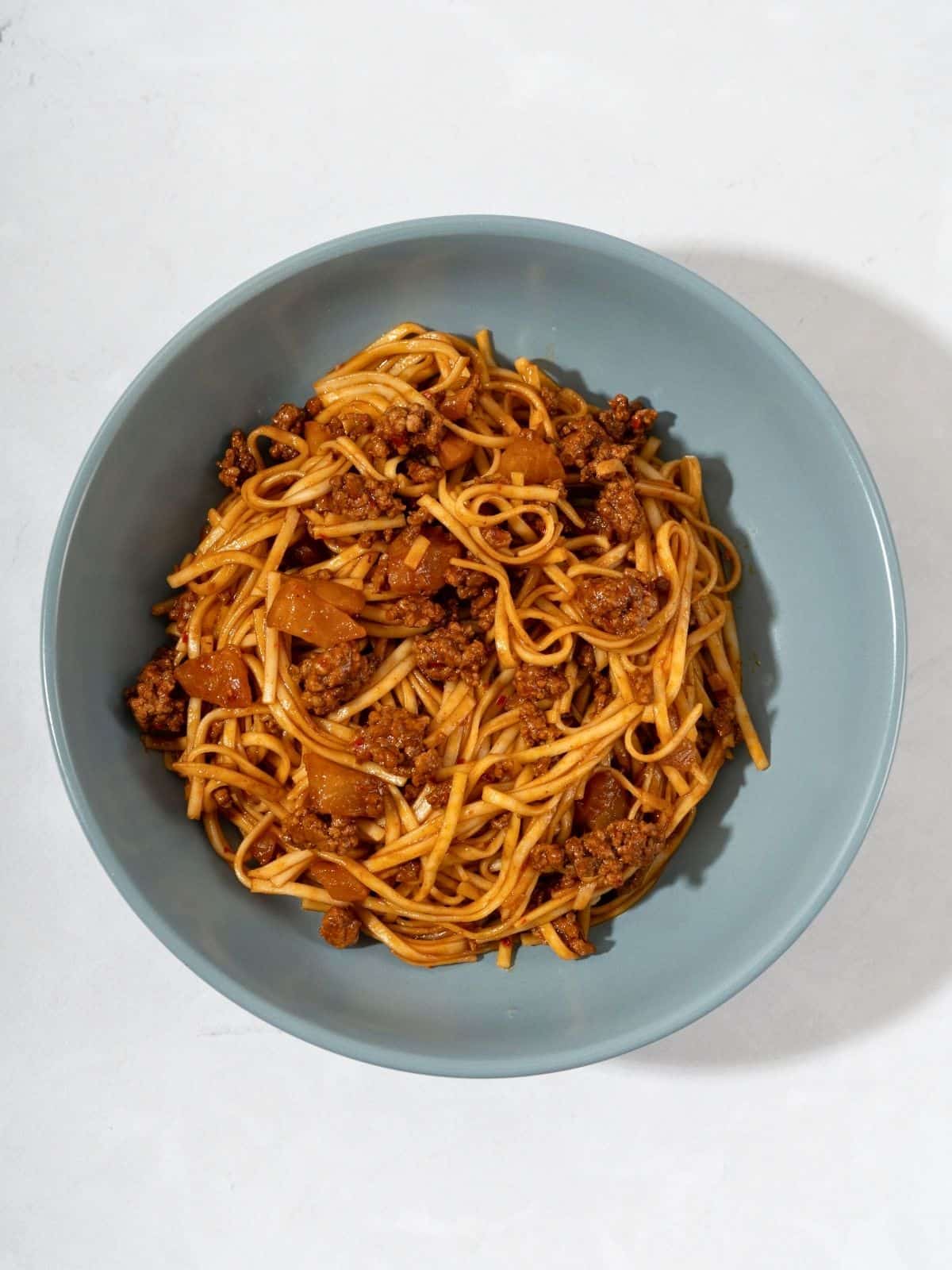
Easy Kimchi Noodles
Ingredients
- 8 oz dry noodles of your choice 225g
- 1 tablespoon butter 15g
- 8 oz ground meat (pork, beef, or chicken) 220g
- ½ cup kimchi, chopped 100g
- ¼ cup kimchi juice 60mL
- 1 tablespoon gochujang Korean chili paste
- 2 tablespoons soy sauce
- ½ tablespoon rice vinegar or apple cider vinegar
- 2 tablespoons oil or more butter
- 1 teaspoon brown sugar
- ½ teaspoon salt
Instructions
- Cook the noodles according to the package instructions until they're just al dente. You'll want them to have a bit of bite because they'll continue cooking when we stir-fry them. Once cooked, drain and set aside.
- Heat up the 2 tablespoons of oil (or butter) in a large pan or wok over medium heat. Toss in the ground meat and cook it until it's just browned but not fully cooked, about 5 minutes.
- Next add the butter to the pan; once melted and frothy, stir in the chopped kimchi and let it cook for a couple of minutes until it's fragrant; the meat should be fully cooked by now.
- Pour in the kimchi juice, gochujang, soy sauce, salt, sugar, vinegar and two tablespoon of water. Stir everything together and let it simmer for a minute to meld the flavors.
- Turn off the heat, but keep the pan over the still-hot burner. Add the cooked noodles to the pan and toss them with the sauce and kimchi mixture, stirring until the noodles are well coated and heated through.
- Give it a taste and adjust the seasoning with a bit more salt if needed, then serve the kimchi noodles hot, with extra kimchi on top if you like it extra spicy.



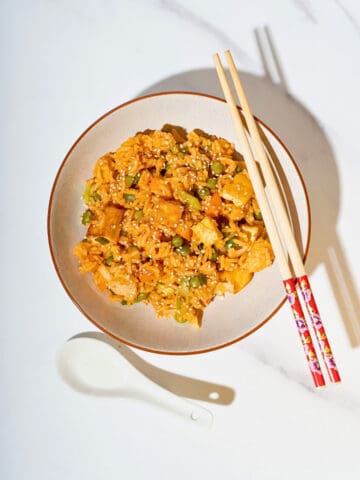
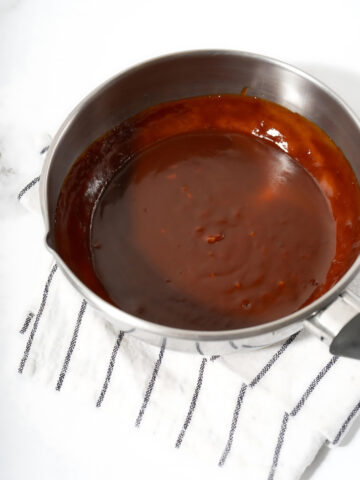

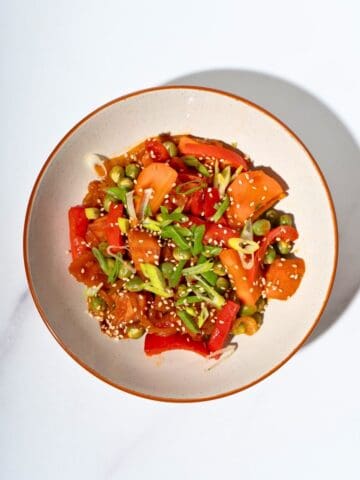
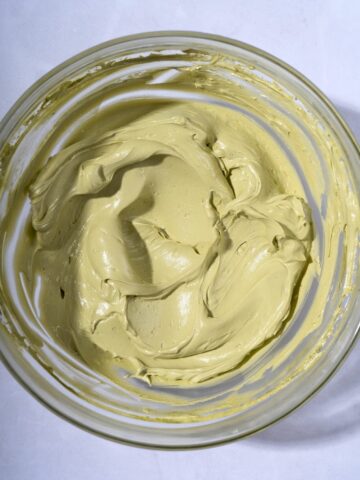
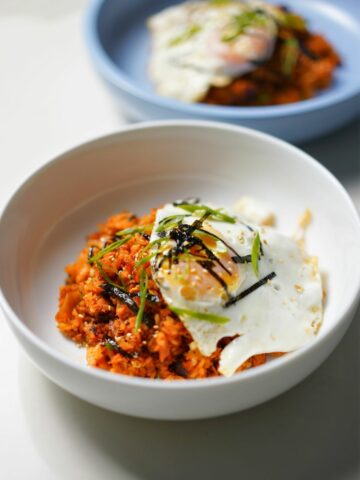

Comments
No Comments